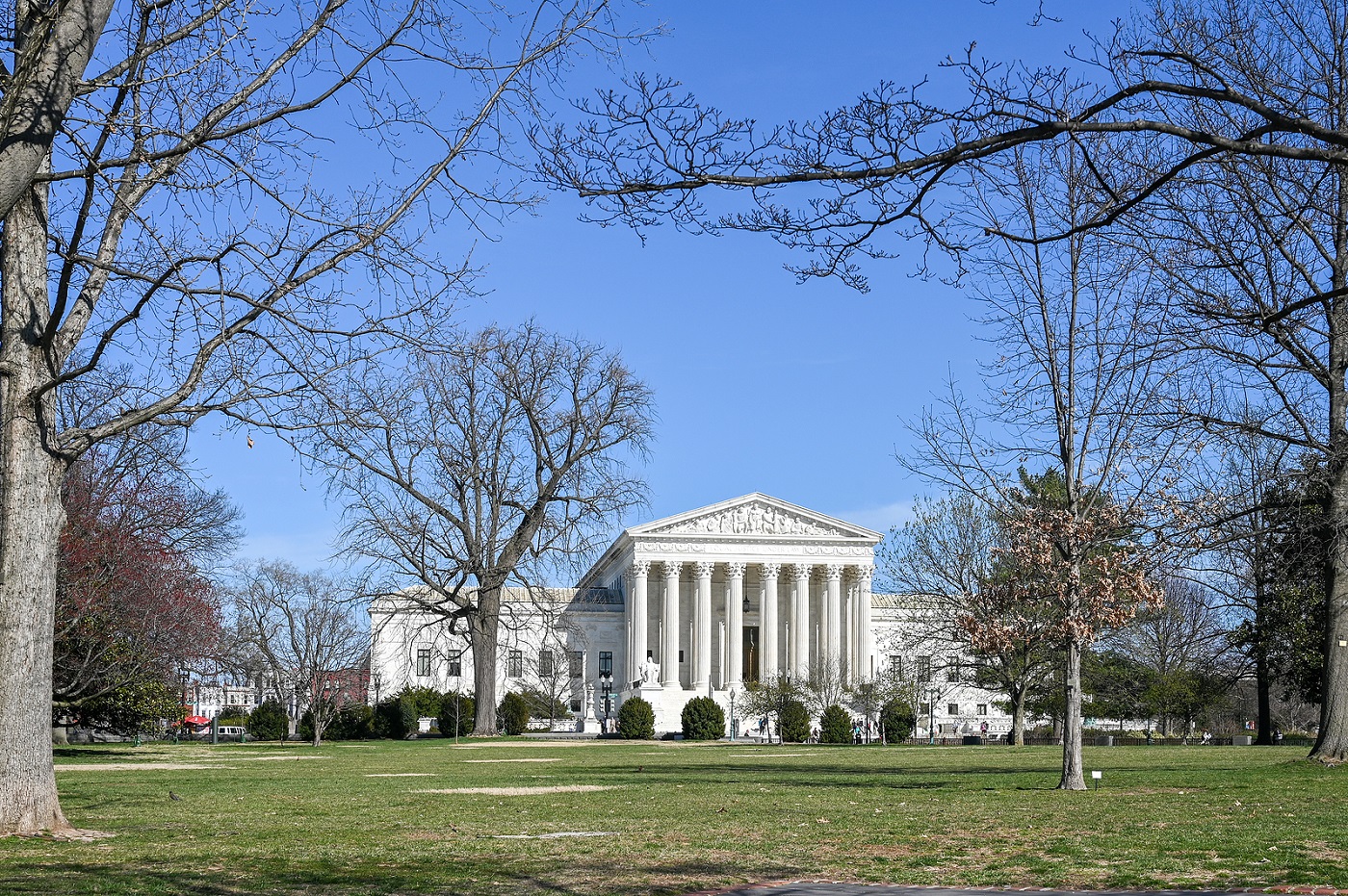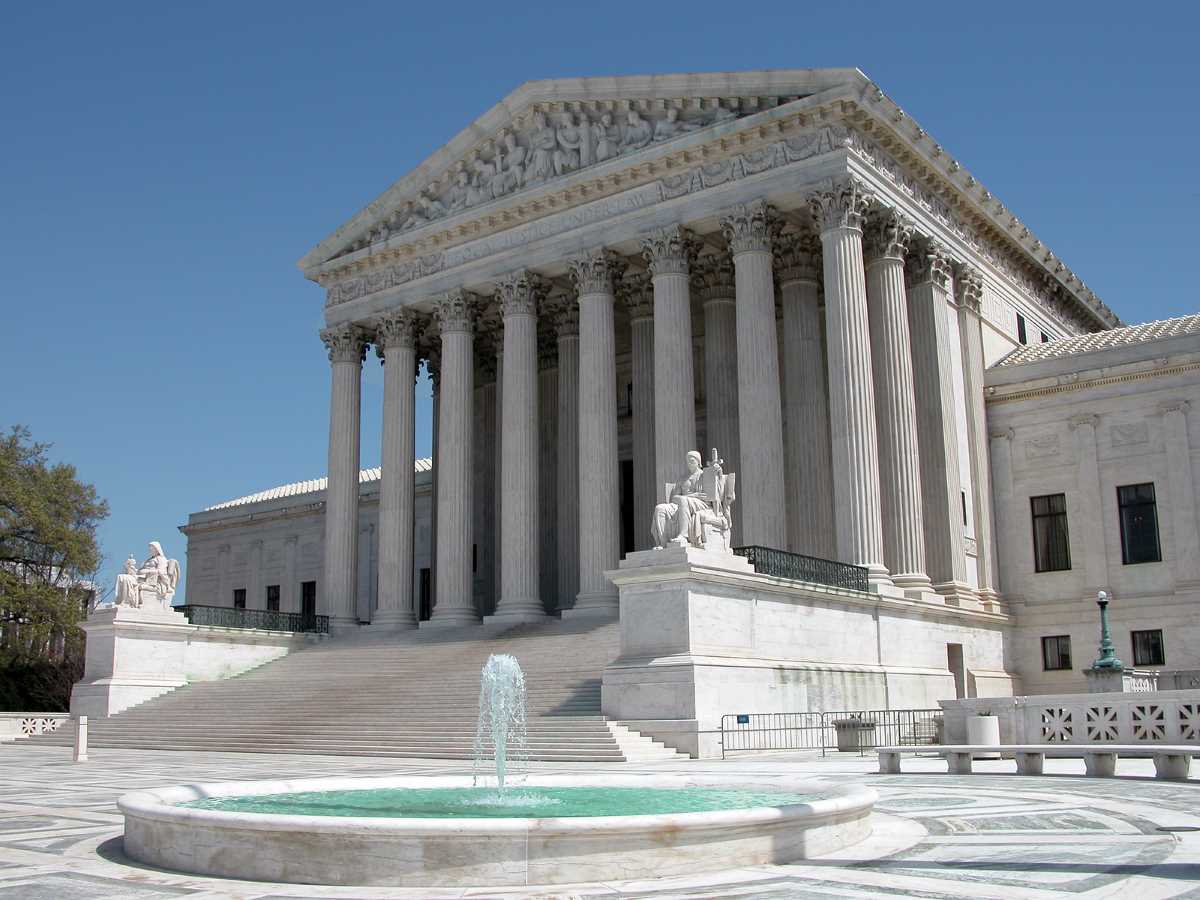The Chevron doctrine provides that when a statute is ambiguous — that is, when it is unclear whether US Congress has spoken directly to the precise issue at hand — courts must defer to the interpretation of the relevant agency as long as the agency interpretation of the statute is reasonable.
Since 1984, the Chevron doctrine has played a foundational role in administrative law and placed federal agencies as the primary interpreters of the statutes they administered. In recent years, many scholars and policy advocates have questioned whether the Supreme Court should, or would, overrule Chevron and reassert the judiciary’s primary role in interpreting statutes.
The Loper Bright decision is available here. Understanding that for many, this decision has resulted in a deep dive into arcane issues of constitutional law and regulatory policy, below we ask and answer nine questions about the decision, its background, context, and likely impact.
What happened?
CASE BACKGROUND
Both Loper Bright and Relentless involve the Magnuson-Stevens Act, a law that empowers the US Secretary of Commerce and the National Marine Fisheries Service (NMFS) to require certain fishing vessel operators to provide space onboard their vessels for federal observers tasked with ensuring compliance with various federal regulations.
To implement the Magnuson-Stevens Act, NMFS issued a rule requiring the fishing companies, rather than the government, to pay the costs and salary of the observers (roughly $710 per day). The petitioners in Loper Bright, four family-operated herring fishing companies, argued that the Act did not authorize the agency to impose these fees and challenged the rule before the US District Court for the District of Columbia. Relentless involved a challenge to the same regulations by two New England fishing vessels brought in Rhode Island federal court.
The appellate courts reviewing Loper Bright and Relentless, the US Courts of Appeals for the DC Circuit and the First Circuit, respectively, both applied the “Chevron doctrine” and ultimately upheld the NMFS regulation.
The DC Circuit found ambiguity in the statute that justified deferring to the agency’s reasonable interpretation. The First Circuit, in turn, cited back to the DC Circuit’s opinion in Loper Bright and similarly found the NMFS regulation did not exceed “the bounds of the permissible.” The Supreme Court granted certiorari in both cases and, considering them together, addressed whether it should uphold, limit, or overturn Chevron.
THE LOPER BRIGHT DECISION
In a 6-3 decision, the Supreme Court overruled Chevron and held that courts must “exercise their independent judgment” when interpreting federal statutes and may not defer to agency interpretations simply because they determine that a statute is ambiguous.
Tracing the history of “deference” from the Federalist Papers through the New Deal, the Court explained that the judicial branch has always had the exclusive responsibility for interpreting the law. While courts should and did give “respect” to executive branch interpretations, the final decision has historically been for the courts alone.
The judicial branch’s role, explained the Court, was solidified in 1946 with the passage of the Administrative Procedure Act (APA), which provides that the courts will decide “all relevant questions of law” arising during a review of agency actions. The courts may “seek aid” from the agency interpretations, but courts still must “independently interpret the statute and effectuate the will of congress.”
The Court concluded that Chevron deference is inconsistent with this history and the text of the APA, and further noted that federal agencies (as opposed to federal judges) have no special expertise when it comes to interpreting statutes.
Why now?
Chevron has been in the Court’s crosshairs for the better part of a decade. Justice Neil Gorsuch pointed out in a lengthy concurrence in Loper Bright that the Supreme Court has not applied the Chevron doctrine since 2016. In a separate dissenting opinion last year — discussed here — Justice Gorsuch outlined how the Chevron doctrine has been subjected to so many competing interpretations and carve-outs that it has been rendered practically unworkable and incoherent.
Further, as the majority recognized, if courts defer to agencies under Chevron, that approach is inconsistent with other interpretive doctrines, most notably the “major questions doctrine,” which the Court used to strike down the US Environmental Protection Agency’s (EPA) regulation of greenhouse gases in West Virginia v. EPAin 2022 because the Clean Air Act had not “expressly” granted EPA authority to require decarbonization of the US energy sector. (For more on this case, see here.)
Why is everyone talking about “Chevron deference”?
Loper Bright, when read in conjunction with other decisions like West Virginia v. EPA from two terms ago or SEC v. Jarkesy, decided this term and discussed here, has been interpreted by some as the culmination of a long-term trend in which justices appointed by Republican presidents are reconfiguring US administrative law. Some view Chevron deference as a crucial safeguard to protect administrative agencies and permit them to regulate in highly technical areas based upon sometimes broad mandates from Congress without fear that a judge lacking technical knowledge or expertise would overstep. For those individuals, the end of Chevron deference represents a threat to the administrative state as we know it and raises fear that judges rather than agencies will decide the propriety of complex technical issues.
For others, Chevron deference represents a usurpation of the judiciary’s role in interpreting the law and leads to administrative agencies over-regulating and over-stepping the authority vested in them by Congress. Some groups may view Chevron deference as part and parcel of some unaccountable deep state. For these individuals, the end of Chevron deference represents a long-awaited victory against overactive agencies exerting authority beyond that granted by Congress.
For many, Chevron deference is simply an interpretive mandate that attempted to balance the judiciary’s role in statutory interpretation with some level of deference to the agency’s particular knowledge and expertise.
Any tendency to catastrophize may be exacerbated by this being a presidential election year. While the Loper Bright decision is important, the practical impact of it is debatable and not yet clear. While it is possible that Loper Bright will announce a sea change in administrative practice, it is also possible that Loper Bright’s calls for “administrative respect” but not “deference” will be modest in the near term. Further, the Court went out of its way to note that prior cases that applied Chevron to uphold an agency’s actions were still good law based on the doctrine of stare decisis and that “mere reliance on Chevron cannot constitute” a reason for “overruling such a holding[.]”
What does the decision mean for agency interpretations of their own regulations?
It does not affect them. Kisor v. Wilkie, a 2019 Supreme Court decision, remains the key precedent governing judicial review of an agency’s interpretation of its own regulations. Significantly, Loper Bright cites Kisor favorably. Under Kisor,agency regulatory interpretations are entitled to deference if they are reasonable when viewed with traditional tools of statutory construction and courts should defer to agency interpretations that:
- Are official positions of the agency made in some formal context.
- Are consistent with prior formal interpretations of the agency.
- Rest on actual agency expertise and not a litigation position.
- Were issued with fair notice to regulated entities.
Citing the APA, the Court in Kisor stated that where a rule is ambiguous, “when a court defers to a regulatory reading, it acts consistently with [APA] Section 706.” For more on Kisor, see here.
Does the decision bar courts from considering an agency’s expert input?
It does not. The majority notes that
[d]elegating ultimate interpretive authority to agencies is simply not necessary to ensure that the resolution of statutory ambiguities is well informed by subject matter expertise. The better presumption is … that Congress expects courts to do their ordinary job of interpreting statutes, with due respect for the views of the Executive Branch. And to the extent that Congress and the Executive Branch may disagree with how the courts have performed that job in a particular case, they are of course always free to act by revising the statute.
Loper Bright acknowledges that Congress can delegate policymaking authorities and that reviewing courts should consider any such delegation in reviewing related challenges.
It also notes that “Congress expects courts to handle technical statutory questions. Many statutory cases call upon courts to interpret the mass of technical detail that is the ordinary diet of the law and courts did so without issue in agency cases before Chevron.” (Internal citation omitted.) The majority suggests that courts “do not decide such questions blindly” and that “parties” — including agencies — “and amici in such cases are steeped in the subject matter, and reviewing courts have the benefit of their perspective.”
In such circumstances, while “an agency’s interpretation of a statute ‘cannot bind a court,’ it may be especially informative ‘to the extent it rests on factual premises within’ [the agency’s] expertise.’” Accordingly, citing Skidmore v. Swift & Co., Executive Branch interpretations may still have particular “power to persuade, if lacking power to control.”
Will the decision allow regulatory challenges to be decided more quickly by courts?
Probably not. As we discussed above, nothing in Loper Bright portends that agencies now lack the ability to use technical input to justify how they have interpreted statutes they are tasked with executing. Further, the Loper Bright formulation of “respect” to agencies — with courts being empowered to make ultimate decisions about statutory interpretation — may procedurally look very much like pre-Loper Bright “deference” in terms of what sorts of briefs are filed, how technical evidence is submitted, or how courts process challenges.
Many disputes will also involve an additional layer of briefing related to the impact of the decision itself as challenges proceed through courts, particularly when there are questions about whether Congress delegated specific questions to agencies.
Will this decision result in more litigation?
Yes. Post-Loper Bright, we can expect increase in challenges to regulations across the government, with parties evaluating what pre-Loper Bright regulations they can encourage the Court to revisit, especially in light of the Court’s decision in Corner Post v. Board of Governors, which effectively relaxes APA-related statutes of limitations in some cases. This litigation will occur even though the Loper Bright majority attempted to stem the tide by stating that agency rules which were enforceable before the decision remain good law for now. As we have discussed before, many regulatory challenges are filed in forums perceived to be hostile to regulation. Those cases will then percolate through appellate courts to flesh out what administrative litigation looks like after this decision, particularly on the issue of how courts can appropriately parse out statutory interpretation, which is in the province of the courts from decisions delegated by Congress to agencies.
The regulated community should use the Loper Bright decision as an opportunity to review key regulations that govern their operations and assess whether regulations are newly vulnerable. Our teams are ready to provide assistance in conducting this review.
Does the decision affect state law?
The Loper Bright decision binds only federal courts.
Traditionally, state courts have not uniformly adopted Chevron. Around half the states, including Illinois, New Jersey, New York, and Pennsylvania, allow for Chevron-style deference to state agencies. Others, including California and Virginia, allow some degree of deference depending on the particulars of agency decisions.
Given that Chevron deference has been controversial for some time, state legislatures in Arizona, Georgia, Idaho, Indiana, Nebraska, Ohio, and Tennessee have in recent years passed laws closely cabining deference afforded to state agencies. Florida voters amended the state constitution in 2018 to prohibit courts from deferring to state agencies. States including Arkansas, Colorado, Delaware, Michigan, Mississippi, and Utah have court decisions to the same effect. (See here for a more detailed discussion.)
What should we watch for next?
In the coming days, many ArentFox Schiff teams will analyze how the Loper Bright decision will affect specific practice areas. Additionally, watch for our end-of-term wrap-up on administrative and environmental law.





